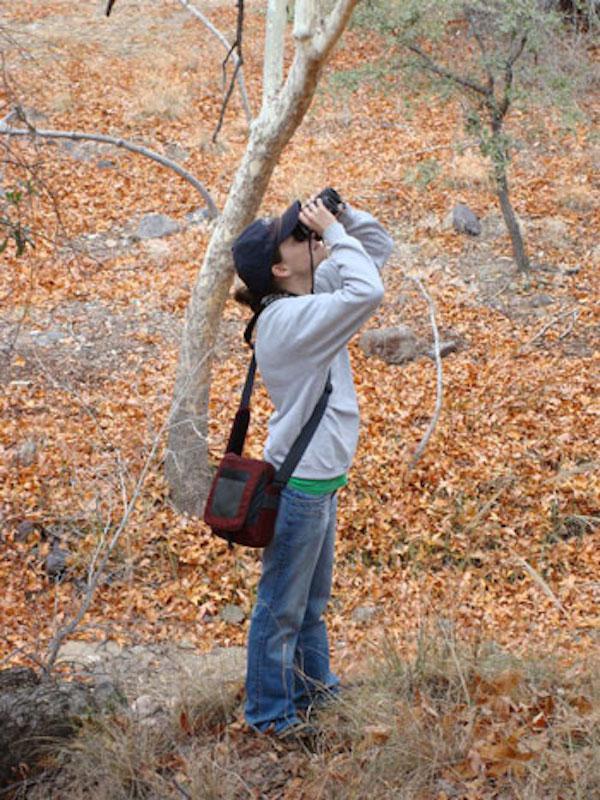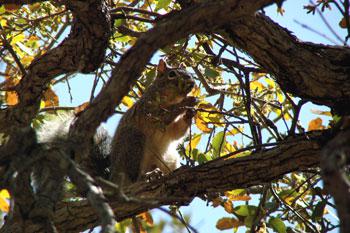Nichole Cudworth
Past Graduate Student

-
ENR2
1064 E Lowell St
Tucson, AZ 85719
What can endemics tell us? Space use and ecology of the endemic Arizona gray squirrel
Research questions: How does mating strategy influence the space use of Arizona gray squirrels? At what scale are Arizona gray squirrels selecting nest sites?
Major findings
Parental investment often differs between the sexes. For mammals, females invest heavily in reproduction, due to the high costs of pregnancy and lactation. Consequently, fitness of females is likely limited by the availability of food. Fitness of males, however, is more likely limited by the availability of mates. We investigated how theselimiting factors would be predicted to influence the space
use of Arizona gray squirrels. Arizona gray squirrels do not defend territories, and a female will only enter estrus for one day throughout the breeding season, thereby significantly reducing mating opportunities for males. We found that home ranges of Arizona gray squirrels are large (59 ha) and vary between sexes and seasons. Males had larger home ranges than females overall, and males increased home-range sizes during the breeding season, when males were traveling greater distances to locate receptive females. Females, however, maintained relatively constant home-range sizes throughout the year, although these home ranges were still large compared to other, closely related species, suggesting a system in which food availability is likely patchy and variable.
Tree squirrels are highly dependent upon nests to provide a place to rest, raise young, avoid predators, and escape inclement weather. However, the scale at which nest-site selection has been analyzed has not been consistent, despite the obvious management implications when designing habitat plans. Arizona gray squirrels use leaf nests, or dreys, extensively throughout the year. We evaluated nest-site selection at 4 spatial scales: forest-type, nest-site, nest-tree, and within-canopy placement. Arizona gray squirrels select nesting locations within all spatial scales, although the benefits provided within these spatial scales likely varies, including providing access to food and water, cover from predators, travel routes to and from nest trees, thermal protection, and stable nesting structures. Riparian areas and the availability of Arizona sycamores (Platanus wrighti) for nest sites were especially important, emphasizing the need to protect these unique forest types in the mountains of the southwestern United States.
Publications
Cudworth, N. L., and J. L. Koprowski. 2014. Survival and mortality of the Arizona gray squirrel (Sciurus arizonensis). The Southwestern Naturalist 59:423-426. PDF of Article
Cudworth, N. L., and J. L. Koprowski. 2013. Foraging and reproductive behavior of Arizona gray squirrels (Sciurus arizonensis): impacts of climatic variation. Journal of Mammalogy 94:683-690. PDF of Article
Cudworth, N.L., J.L. Koprowski. 2011. Importance of scale in nest-site selection in Arizona gray squirrels. Journal of Wildlife Management. 75: 1668–1674. PDF of Article
Cudworth, N. L., and J. L. Koprowski. 2010. First record of range extension of the cliff chipmunk (Tamias dorsalis) into the Huachuca Mountians. Western North American Naturalist 70:418-420. PDF of Article
Where is Nichole Now?
Nongame Biologist
Wyoming Game and Fish Department
260 Buena Vista Dr.
Lander, WY 82520


